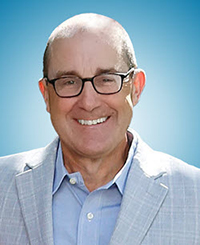Approximately 55% of startups pivot their business models.
While not every software product needs to be in pursuit of unicorn status, it can be hard to see a good idea not reaching its full potential. And when Todd Blankenbecler took over EasyRx from a dental lab in late 2015, he had a vision for helping the software live up to that potential.
At the time, it had 13 active paying customers and around 50 free users. All in all, the business was bringing in about $30,000 in annual recurring revenue (ARR).
Today, EasyRx has scaled to over $2.5M in ARR with Blankenbecler at the helm as President and CEO. And its growth can be attributed in large part to his decision to pivot the business model.
Flipping the SaaS business model for success

“I wanted to get back to growing a software company; being an entrepreneur again,” explains Blankenbecler. So, he and his business partner acquired EasyRx with a plan to change its direction and help it achieve its revenue potential.
At the time, the EasyRx software was focused on dental and orthodontic labs. But Blankenbecler and his partner had a different idea for it. “We took 2016 to do a little round of funding and we went into the transaction planning to flip the business model to make it a practice-focused solution. We didn’t rebuild the platform from the ground up; we inherited the UX and the workflows, but we enhanced those significantly.”
And it worked. Back in 2015, the product had only a handful of paying users. Today, the business:
- has over 2200 customers—mostly dental and orthodontic practices, but several hundred labs, as well,
- recently acquired another business, and
- received the Ortho Innovator award from the American Association of Orthodontists (AAO) in 2020.
“The AAO gives this award annually to the most innovative company positively impacting practices. It was maybe the most exciting moment for me at EasyRx,” shares Blankenbecler.
And, of course, that $2.5M ARR milestone is another good indicator the new business model seems to be working.
The roadmap to $2.5 million ARR
Naturally, a lot went into EasyRx’s ability to find success with its new business direction, and even Blankenbecler admits he made some mistakes along the way.
But more importantly, he and his business partner did a lot of things right. Blankenbecler shared with us a few key points from the journey, along with his advice for other CEOs who may be in the same boat.
Bringing on the right investors for the business’s goals
“Before teaming up with outside investors, it’s important for the founders or initial investors to have some serious conversations about what they want to get out of the business,” Blankenbecler advises.
And the type of investors you look for should depend on the goals that come out of those conversations.
“If you want to remain more in control, friends and family would be where you start first. And I don’t mean you should go to your neighbor down the street; friends and family can be people you know in the industry,” he laughs. “But if you want to grow fast and grow big, you’ll want to get out and look for professional money.”
When going out to raise that professional money, it can be easy to get caught up in the numbers—the valuation and the funding. But even business relationships have a personal side, and Blankenbecler reminds other CEOs to keep that in mind when teaming up with investors.
“You might not be playing golf with them or involving them in the day-to-day, but you’re going to want to know the person who’s going to be your primary contact,” he says. “You’re going to work together to determine strategy and direction, so it’s important that you establish a relationship, and that you want to work with this person.”
As far as the investors Blankenbecler is currently working with on EasyRx? He says, “I think we have a capital partner for the long term. I can focus on running EasyRx, which I enjoy doing, and they let me do that.”
Celebrating all the wins
When you look up SaaS-related news, many of the headlines you’ll see are related to financial achievements—Company X Hits $100M ARR! Company Y Achieves Unicorn Status!
And certainly, financial or revenue milestones are exciting and deserving of celebration. But EasyRx, like any other business, has experienced its fair share of milestones in addition to the financial ones.
“Previously, EasyRx was free for dental practices. When we flipped the business model, we started charging them. And so certainly our first major milestone was when we got around 50 paying practice customers and we thought, ‘okay this change to the business model is going to work,’” Blankenbecler shares. “Our revenue was small, but we were seeing traction in the direction we were taking the product.”
Customer acquisition milestones like this are important—they’re one of the necessary steps to growing those revenue numbers. Another milestone that was meaningful for Blankenbecler was seeing the brand recognition as it began to build traction in the market.
“When you’re a startup, people don’t know you. Initially, we got a lot of pushback from labs,” he says. “And then once we got around 25 labs on board, we would start to hear prospects saying, ‘I heard ABC lab is using EasyRx and their customers like it.’ And then we had a few integration partners engage because they were hearing enough about EasyRx to want to establish a partnership.”
Promoting external growth by prioritizing internal culture
EasyRx has been a 100% remote organization since 2017, so the idea of creating a company culture that motivates and engages employees is important for Blankenbecler and his leadership team.
“If you’re working with a distributed workforce, you really have to make culture a focus. You’ve got to still try to make the job fun, even though you can’t have a barbecue on Friday,” he says.
The EasyRx team regularly participates in virtual social events such as trivia games, fantasy football pools, and weekly company-wide meetings where discussion of work is not allowed. Weekly one-on-one meetings between employees and their supervisors are encouraged to be made a priority.
And as a result? “People like working at EasyRx. Our turnover has been low,” Blankenbecler says. “And that’s great for continuity for our customers—if they worked with a team member on something four years ago, that team member is still here.”
The time is now
The scale EasyRx has seen since Blankenbecler came in and flipped its business model isn’t slowing down anytime soon. Having been first to market, the business works with a healthy share of the orthodontic and dental market in North America, so it’s had time to get ahead of any competition. Coupled with the fact EasyRx has a capital partner that allows Blankenbecler to focus on running his business, he’s looking forward to continuing to make it bigger and better in the coming years.
And for his fellow CEOs that want to flip an existing SaaS product and scale it according to their own vision, Blankenbecler offers one simple piece of advice.
“Not everything can be top level. Sometimes you’ve got to get down in the weeds to really drive your business forward—get on sales, development, support calls to figure out what needs to happen next. You’ve just gotta get in there and do it.”







